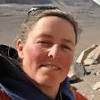7.2.2: Samples 5-7
- Page ID
- 4045
Lake Wanaka Sample Descriptions for LW-10-5, LW-10-6, and LW-10-7
Samples LW-10-5, LW-10-6, and LW-10-7 were collected near the headwater and in Rob Roy Stream (GoogleEarth kmz files for LW-10-5 and LW-10-6 and 7 as shown here).
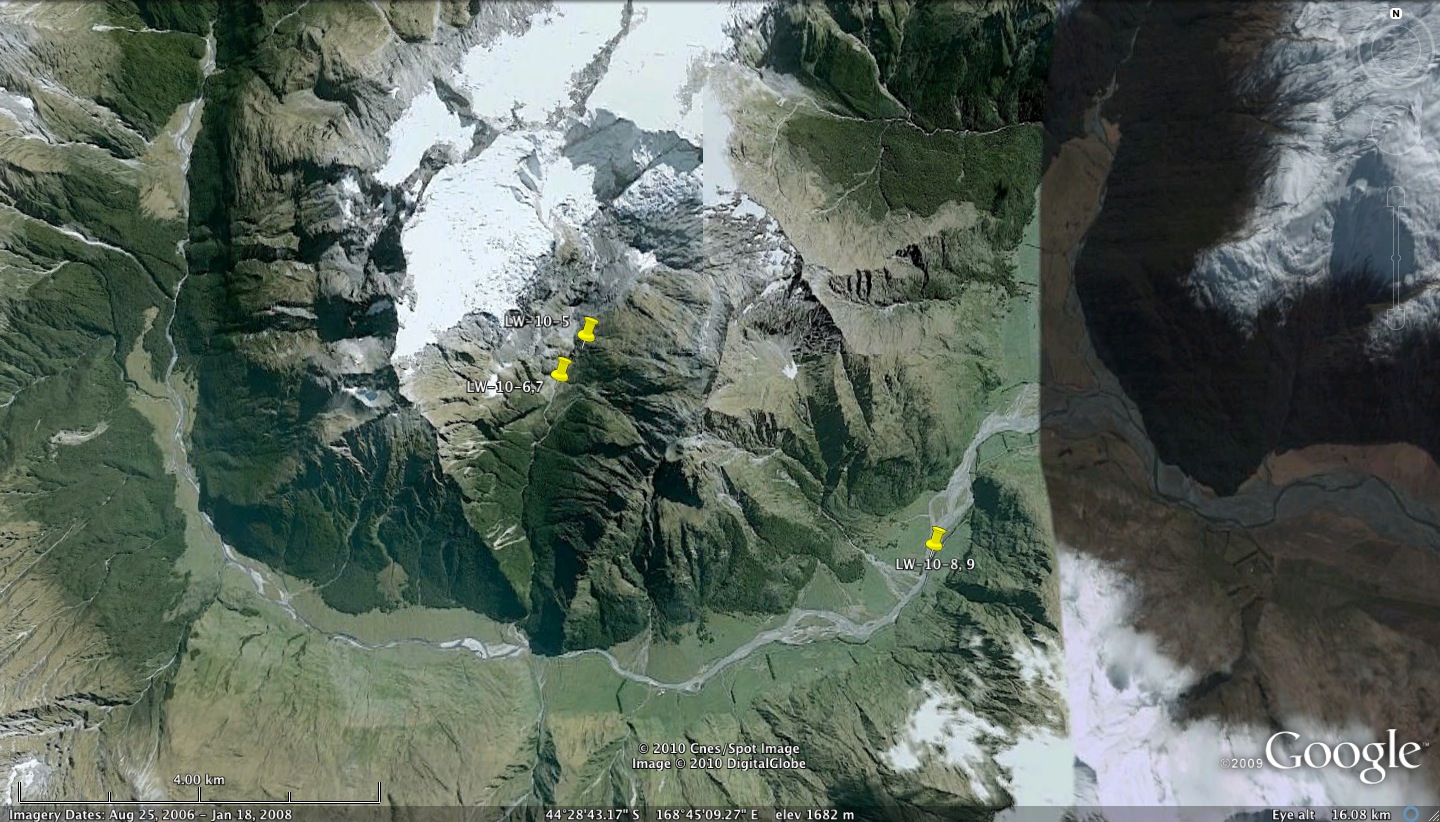
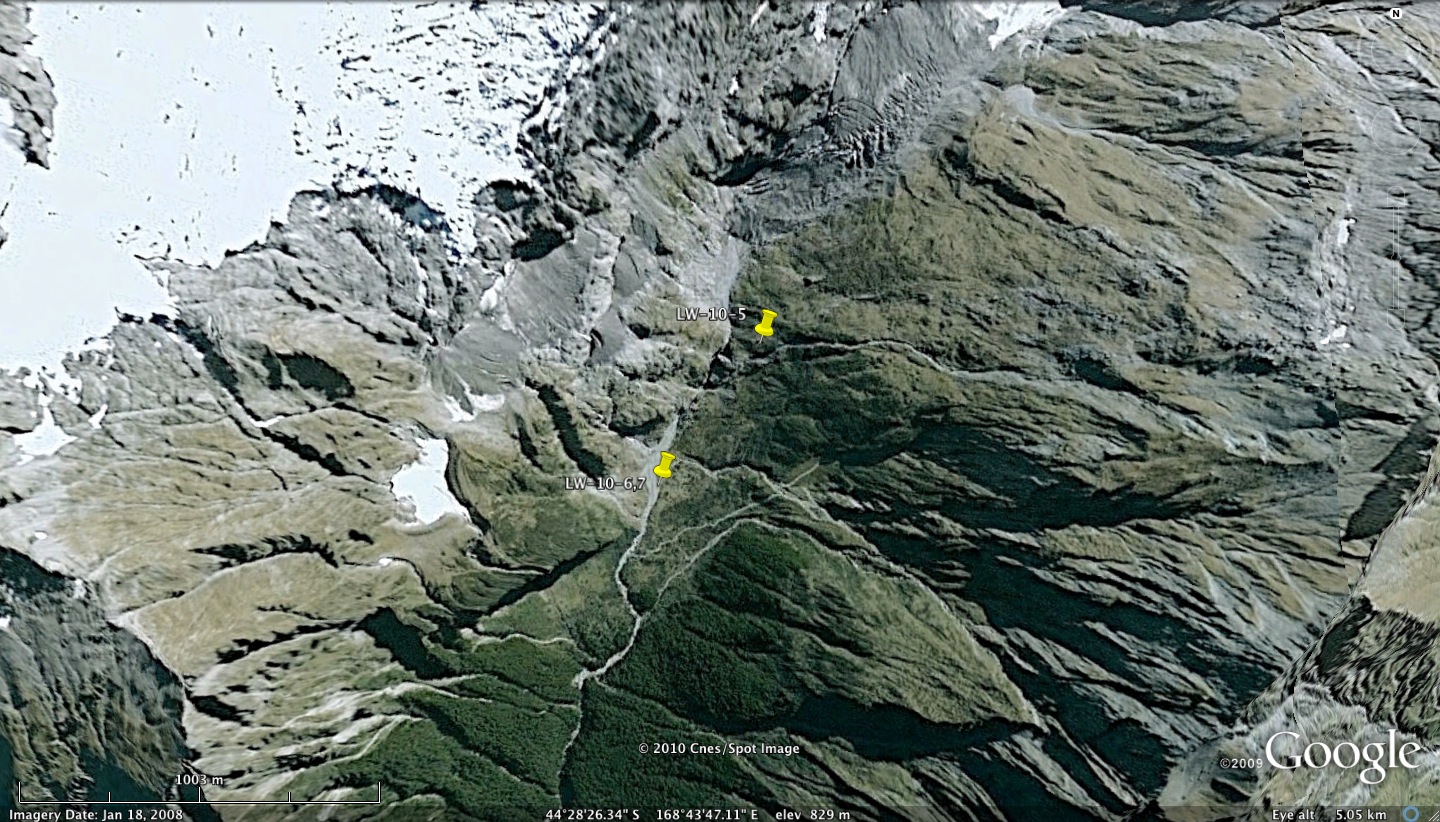
The water comes from melting glaciers, and the water erodes sediment created by the glaciers, landslides, or weathering processes.
Sample LW-10-5 was collected on a very steep slope in an area with glaciers as well as landslides.
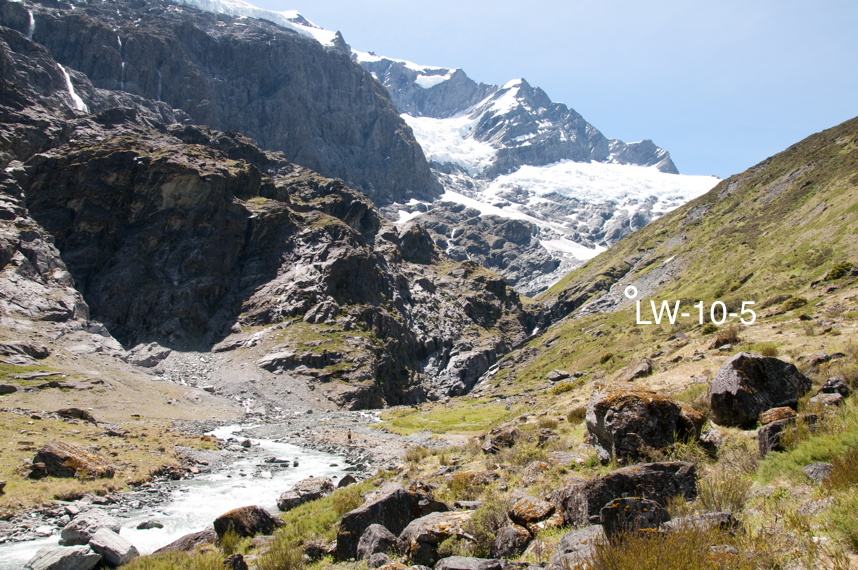
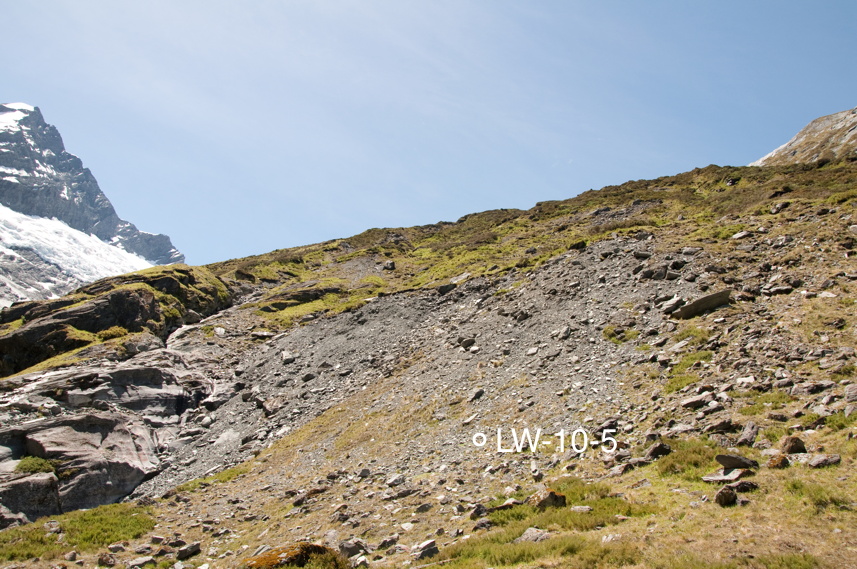
The sample consists only of the grains that could fit in the sample container; grains up to boulder-size were present in the deposit. There are two characteristics of this sample that you should note in your lab descriptions that indicate that the grains were neither transported nor deposited by flowing water. Rather, these two characteristics suggest that the sediment was transported by either a glacier or a landslide (debris flow?) and deposited as either the ice melted or the landslide stopped. This sediment is characteristics of the source area for sediment in Rob Roy Stream. Pen for scale.
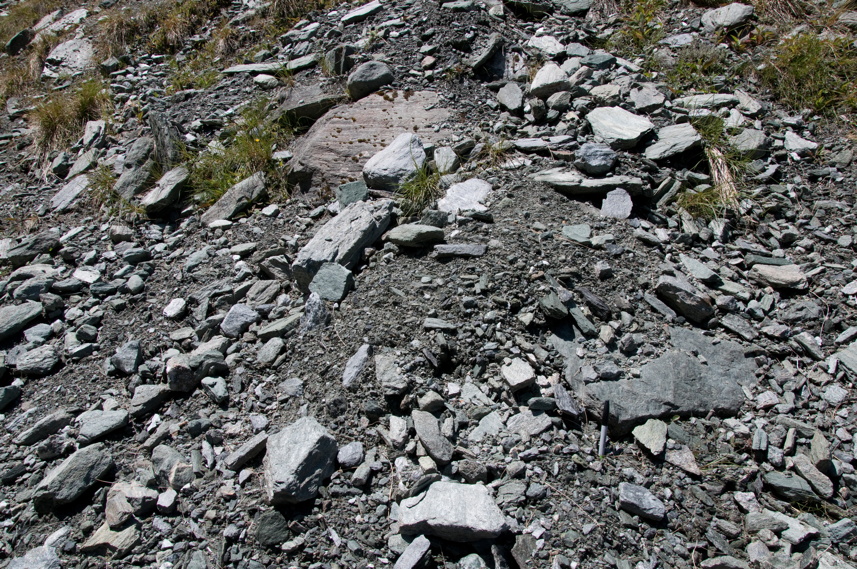
Samples LW-10-6 and LW-10-7 were collected from the edge of Rob Roy Stream. The contrast in the grain size of these two samples suggests a change in flow speed through time. Field relationships (the grains from LW-10-7 overlie those of LW-10-6) suggest that sediment in LW-10-6 was deposited prior to that in LW-10-7. Changes in flow speed are very common in mountain streams. Also note how opaque the water is from a high concentration of suspended sediment. Pen between the two circles for scale in the first image. It is in the same location in the second image.
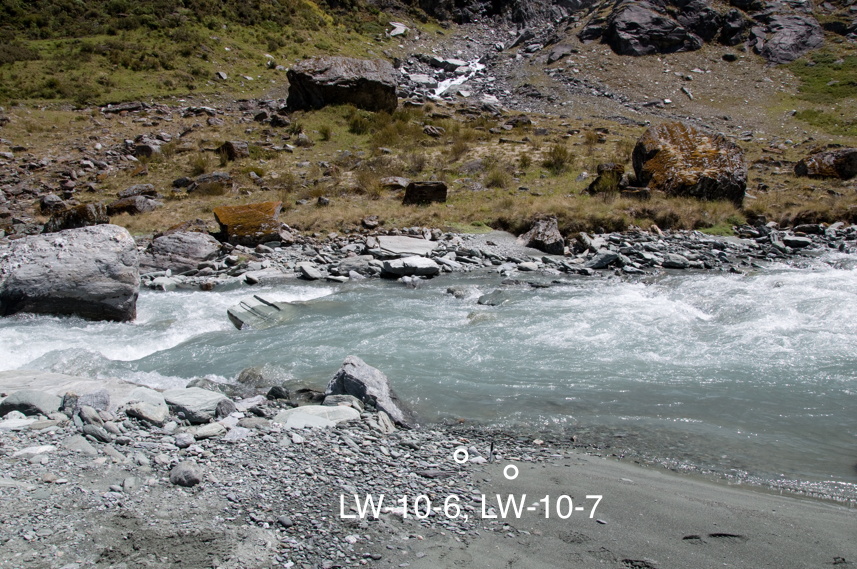
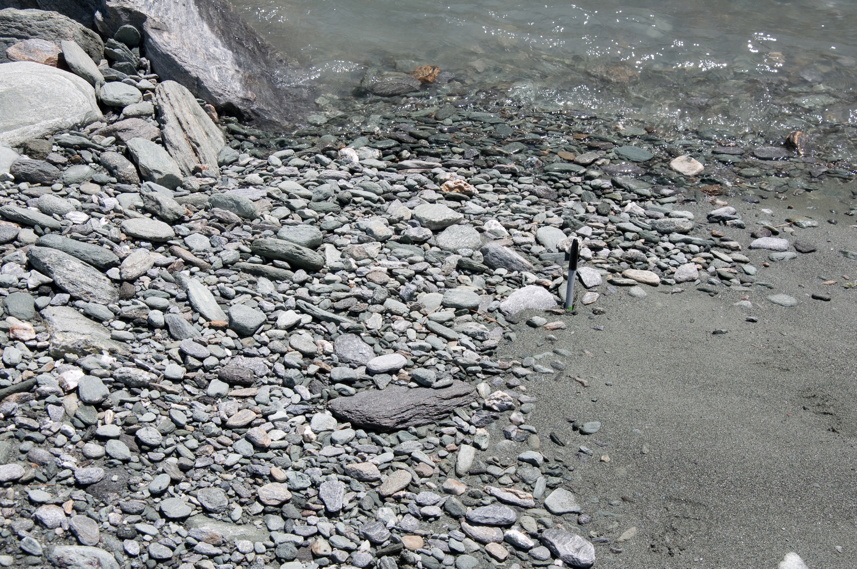
Also compare the level of rounding in LW-10-6 to that in sample LW-10-5. It is visible even in the photographs and even though the samples were collected only a few hundred meters apart.
Return to Lab 1: Lake Wanaka Area Samples


